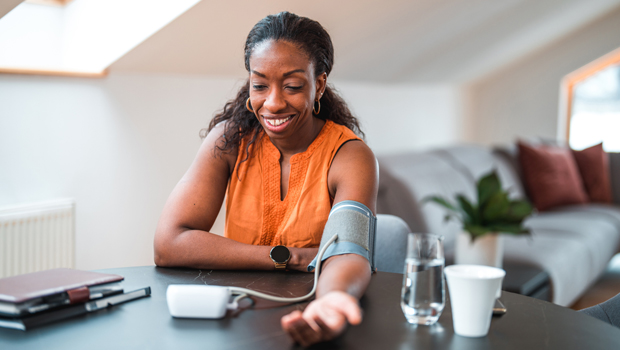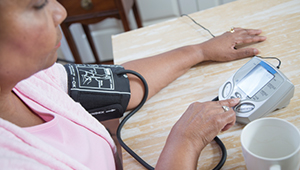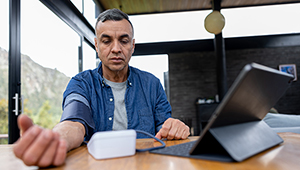Measuring blood pressure at home: It's easy and accurate

Bev Green, doctor and scientist, has tips for monitoring your blood pressure without leaving your house
High blood pressure is called "the silent killer" because more than 1 in 4 Americans with the condition don't know they have it. Also called hypertension, high blood pressure increases risk of strokes, heart attacks, and chronic heart disease. It contributes to a half million deaths in the United States every year.
The good news, said Bev Green, MD, MPH, is many people with hypertension can reduce their risks. Eating right, exercising, and — for some — taking blood pressure-reducing medications can get blood pressure under control. But if hypertension can be silent and not cause symptoms, how can we know if our blood pressure is high or controlled?
Green is a senior investigator at Kaiser Permanente Washington Health Research Institute and a family medicine physician with the Washington Permanente Medical Group. Her groundbreaking studies showed that the most accurate way to measure blood pressure is also what most people prefer — monitoring blood pressure at home. She also has personal experience with high blood pressure.
How to check your blood pressure at home
Based on work by Green and her research team, your doctor may suggest that you monitor your blood pressure at home and give your primary care team the measurements.
Green has this advice for getting accurate home blood pressure measurements:
- Use an automated device with an upper arm cuff. Make sure the device is validated as accurate. Check the Validate BP website for this information or ask your doctor.
- See the device directions to be sure the cuff fits you.
- Measure your blood pressure when you haven't exercised or had caffeine (for example, coffee or tea) for 30 minutes.
- Sit with your back upright and straight, near a table at chest height, with your feet flat on the floor.
- Put the cuff on your bare arm, above your elbow, and rest your arm on the table with palm up.
- Make sure the cuff is at the level of your heart.
- Wait 5 minutes then take 2 measurements, 1 minute apart, sitting quietly between measurements.
- Track your blood pressure over time. Most devices keep a record of recent measurements.
- Measure your blood pressure twice in the morning and twice in the evening at least once a month.
- Share the numbers with your doctor when asked or at your next visit. (If you are a Kaiser Permanente Washington member, you can ask your care team about the best way to share your home blood pressure measurements.)
- If your blood pressure is high, tell your doctor and work together to lower it. This might include measuring your blood pressure more often.
"Once you have a routine, home blood pressure monitoring is easy," Green said. "I do it regularly myself."
For more information, the American Heart Association has webpages about high blood pressure, including detailed instructions and a video about monitoring at home.
By Chris Tachibana
Live Healthy: Top Topics
Research

Is blood pressure reading better at home or clinic?
Home blood pressure monitoring shown to be an excellent alternative for making new diagnoses of hypertension.
Research to practice

Home blood pressure monitoring: From study to clinic
Beverly Green, MD, and Kaiser Permanente work to improve hypertension care.


